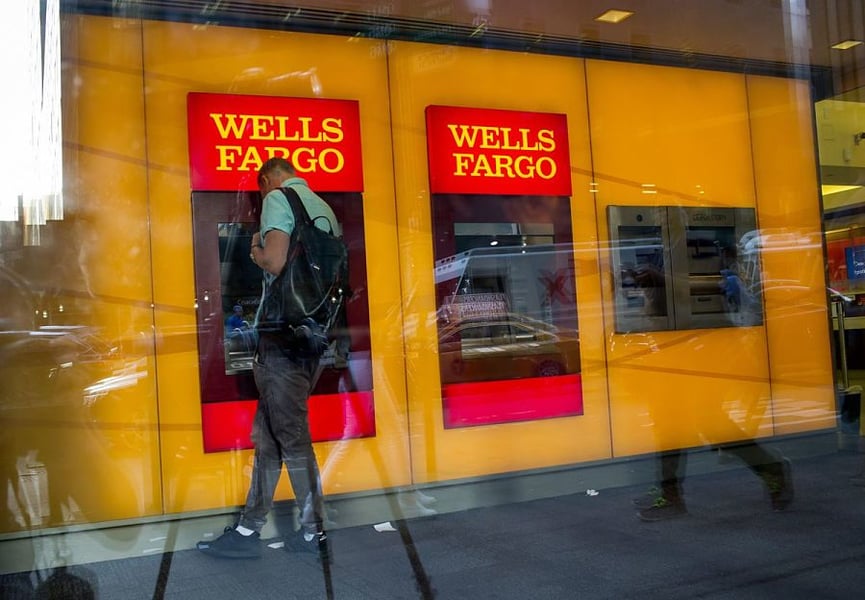

Don’t let anyone tell you regulators haven’t punished Wells Fargo & Co., or at least its shareholders.
The scandal-ridden bank has lost $220 billion in stock market value since the Federal Reserve imposed an unprecedented cap on the bank’s assets in early 2018, crimping its ability to add customers and loans. The constraints are biting harder this year as corporate clients draw down credit lines, which pushes up assets and leaves Wells Fargo even less room to seize opportunities.
Shares of the bank touched a 10-year low last week as analysts raised alarms that shrinking profits make its current dividend less sustainable. While the coronavirus pandemic has taken a toll on bank stocks across the U.S., Wells Fargo’s drop is the steepest among its main peers this year. And since the Fed imposed its cap, the bank’s market capitalization has fallen much more, valuing the firm at $96 billion by Friday’s close of trading.
A series of scandals that began erupting in 2016 prompted the Fed to limit Wells Fargo’s growth until lapses are addressed. The bank’s leaders initially said they believed they could meet the requirements of the order by the end of 2018. After regulators later expressed frustration with the pace of reform, the company installed a new chief executive, Charlie Scharf, in October. He has declined to give guidance on timing, but has cautioned that there’s still much work to do.
The bank was granted a small reprieve in April when the Fed announced it would “temporarily and narrowly” modify the restriction to let Wells Fargo expand lending to small businesses under U.S. programs intended to blunt the impact of the pandemic.
But the firm is still broadly constrained. As the economic slump spurs a “flight to safety,” many banks have soaked up a flood of deposits that they’ve used to increase assets. Wells Fargo hasn’t seen the same benefit.
A growing chorus of analysts and investors are predicting Wells Fargo will have to reduce its dividend this year. The company has offered the highest dividend yield of the largest U.S. banks in the last 12 months.
“Wells Fargo was unable to earn enough in the first quarter to cover the company’s dividend payment in the quarter, and this has raised fears that WFC may need to cut the dividend to a more sustainable level in the future,” KBW analyst Brian Kleinhanzl wrote in a note to clients last Wednesday.

Most firms place a limit on advisors’ sales of alternative investments to clients in the neighborhood of 10% a customer’s net worth.

Those jumping ship include women advisors and breakaways.

Firms in New York and Arizona are the latest additions to the mega-RIA.

The agent, Todd Bernstein, 67, has been charged with four counts of insurance fraud linked to allegedly switching clients from one set of annuities to another.

“While harm certainly occurred, it was not the cataclysmic harm that can justify a nearly half billion-dollar award to the State,” Justice Peter Moulton wrote, while Trump will face limits in his ability to do business in New York.
Orion's Tom Wilson on delivering coordinated, high-touch service in a world where returns alone no longer set you apart.
Barely a decade old, registered index-linked annuities have quickly surged in popularity, thanks to their unique blend of protection and growth potential—an appealing option for investors looking to chart a steadier course through today's choppy market waters, says Myles Lambert, Brighthouse Financial.
